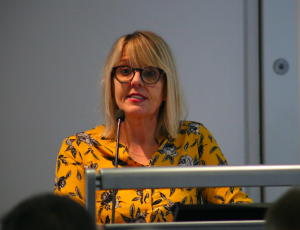Technology redundancies still on hold as crunch-time talks provide a glimmer of hope
Telecoms & Financial Services, BT September 11 2020Last ditch CWU efforts to ensure that every possible alternative to compulsory redundancies that would trigger a full-scale industrial relations crisis in BT Technology are properly exhausted by management have made some progress.
Triggered by the union’s high profile appeal to the division’s Chief Technology & Information Officer, Howard Watson, for emergency discussions last month – just before the first of around 190 job cuts were scheduled to come into effect on August 31 – intensive talks have gathered pace over the last fortnight centred on a new CWU counter-proposal.
Based on the outcome of a major survey of the union’s entire Technology membership – which established beyond doubt that there are sufficient volunteers willing to leave the business on voluntary redundancy (VR) terms to address the staff surplus currently identified by the business – the main elements of the CWU counter proposal included:
– Combining of pools where colleagues have similar skills sets and arranging a preference exercise to determine whether there are enough volunteers that want to leave on VR terms to resolve the required reduction.
– Establishing a register of names of Team Members who would like to leave the business on VR terms by widening of the pools to colleagues with similar skill sets and canvassing to establish if those colleagues would like to leave on VR terms
– Establishing a ‘Job Swap’ process where it may be possible for a colleague who is potentially redundant to swap positions with a colleague who would like to leave under VR terms.
CWU national officer for BT Technology, Sally Bridge, said: “The talks have been difficult and complicated – not least due to the different areas of the business that are in scope – but mainly because the business is advanced in its selection process and the company maintains that any further delay just extends the uncertainty for the individuals involved.

Sally Bridge
“It is true to also say that the business has consistently rejected the preferencing option and has not wanted to move away from its own selection process – and they have also not budged from the position that they want to retain their best talent in line with business requirements.
“However, the CWU has maintained that our proposals need to be fully considered as they avoid, reduce and mitigate against compulsory redundancies. We’ve also made it very clear that we believe Technology has a legal and moral responsibility to explore and analyse any alternatives that can prevent compulsion – and I’m pleased to be able to report that progress has been made in some areas.”
While talks are still ongoing to flesh out details, the emerging alterations to Technology’s approach towards the current staff surplus include:
- The agreement, in principle, of a ‘Job Swap’ process that will allow, on an exceptional basis, for a colleague who has been selected for redundancy but who wishes to stay to swap positions with a colleague who has not been selected but who would like to leave under redundancy terms. This will be a voluntary process and subject to specific criteria that have yet to be finalised.
- For those currently in a redundancy selection pool there will be a limited preference exercise that will follow management’s selection process to establish whether anyone selected for redundancy who wishes to stay can swap with someone who wants to go. (The CWU wanted the preference exercise to precede any selection – on the basis that, if sufficient volunteers opted for VR, no selection would have been necessary). In all scenarios, however, management insists the best talent will be retained in line with the business requirements – meaning that those with an ‘excellent’ rating or with scarce skills will be out of scope for any such ‘redundancy swap’.
“The CWU certainly hasn’t got everything it wanted – and, in particular, we are disappointed not to have been able to persuade the business to offer a genuine preference exercise before any move to selection, because we believe that would have been far more straightforward and saved individuals a great deal of unnecessary stress and angst,” continues Sally.
“However, the measures we are discussing do have the potential to mitigate the need for wholesale compulsory redundancies. Hopefully the details will be concluded in the next few days – and we’ve been assured that no compulsory redundancies will take place in the meantime.”
Sally concludes: “We’ll obviously be providing a full update as soon as we possibly can – but have already arranged a special Technology Branch Forum to update branch officials next Wednesday – which will be followed by a mass online members’ meeting by way of a webinar. (Details are being emailed direct to members).
“I’d urge all members to participate in this important meeting, at which the Technology National Team will hopefully be able to explain in detail the final outcome of our talks.”


